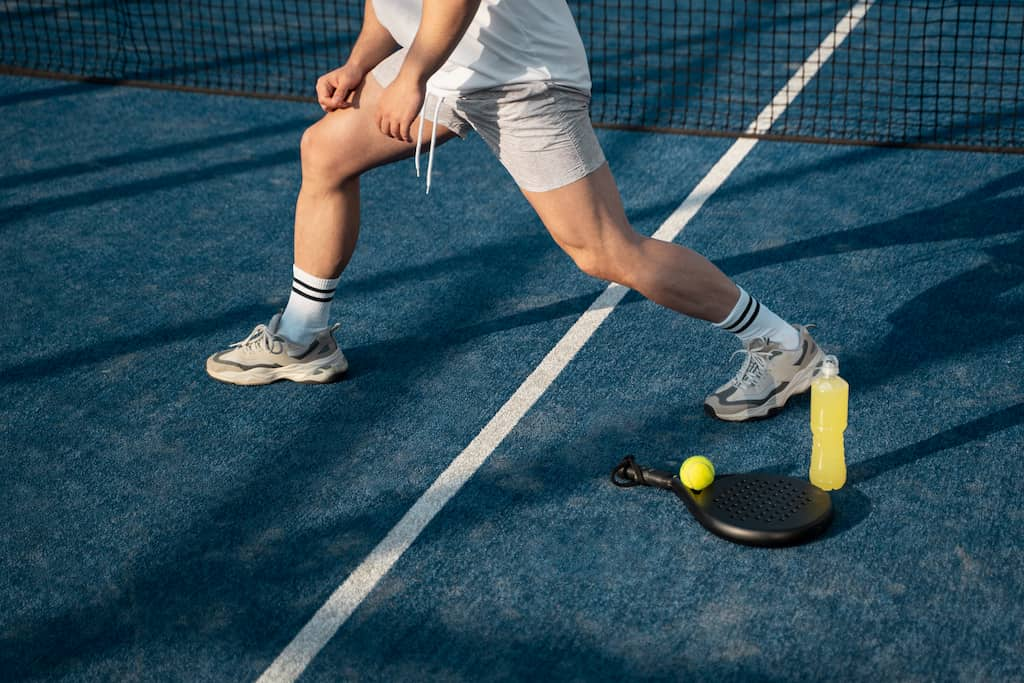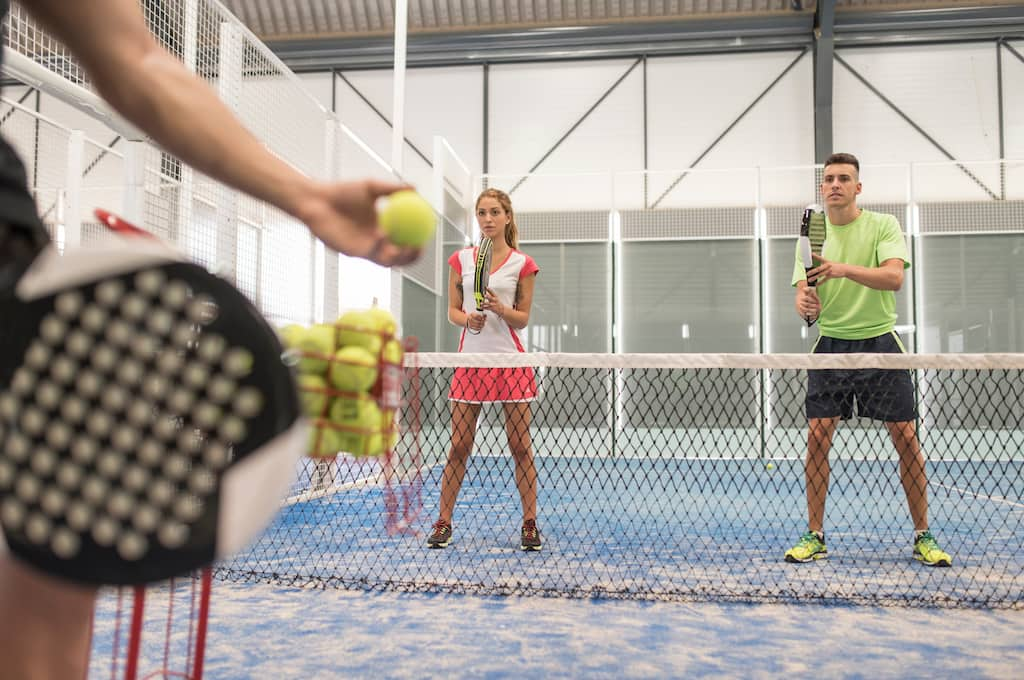Padel, a rapidly growing sport blending elements of tennis and squash, is not just a game of skill and strategy but also an activity with a significant environmental footprint. The environmental impact of Padel mainly revolves around the construction and maintenance of courts, the production and disposal of equipment, and the energy consumption associated with the sport. These factors collectively contribute to the sport’s carbon footprint, resource use, and waste generation. Understanding and addressing these impacts is crucial for the sport’s sustainable growth.
Key Takeaways
- The materials and processes used in building and maintaining Padel courts contribute notably to its environmental impact.
- The production, usage, and disposal of Padel rackets, balls, and apparel have considerable environmental implications.
- The energy consumed in playing Padel, along with the resources used for equipment manufacturing and court maintenance, adds to the sport’s environmental footprint.
Sustainable Practices for Padel Players

As the sport of Padel continues to grow, players have a pivotal role to play in mitigating its environmental impact. By adopting sustainable practices, Padel enthusiasts, including professional players, can help ensure that their love for the game does not come at the expense of the planet. Two key areas where players can make a difference are in choosing eco-friendly equipment and adopting responsible playing habits.
Choosing Eco-Friendly Equipment
One of the most direct ways Padel players can contribute to sustainable Padel is through their choice of equipment. Opting for eco-friendly alternatives can significantly reduce the environmental impact associated with the sport:
Sustainable Racket Materials
When selecting a Padel racket, players can look for brands that use sustainable materials. Some manufacturers are now producing rackets with recycled carbon fiber or incorporating biodegradable materials and natural fibers like flax. These materials not only reduce the racket’s environmental footprint but also often offer great playability.
Eco-Conscious Balls and Apparel
Similarly, players can choose Padel balls and sportswear made from sustainable materials. Some companies produce Padel balls using recycled rubber or more sustainable production processes. For apparel, options made from organic cotton, recycled polyester, or other eco-friendly fabrics are becoming increasingly available. These choices help reduce pollution and resource consumption associated with traditional synthetic materials, making it easier to recycle and track their lifecycle.
Durability and Longevity
Choosing high-quality, durable equipment is also crucial. Equipment that lasts longer reduces the need for frequent replacements, thereby minimizing waste and the environmental impact from production.
Adopting Responsible Playing Habits
In addition to using sustainable equipment, Padel players can adopt more environmentally friendly playing habits:
Carpooling to Clubs
Transportation to and from Padel clubs can contribute significantly to a player’s carbon footprint. Carpooling with fellow players is an effective way to reduce this impact. It not only cuts down on emissions but also fosters a sense of community among players.
Reducing Water and Energy Usage
Players can be conscious of their water and energy usage at clubs. Simple actions like taking shorter showers, using reusable water bottles, and turning off lights and electric equipment when not in use can collectively make a significant difference.
Supporting Eco-Friendly Clubs
Players can choose to play at clubs that demonstrate a commitment to sustainability. Clubs that use solar panels, rainwater harvesting systems, or energy-efficient lighting are contributing to a more sustainable future for the sport.
By making conscious choices in the equipment they use and the habits they adopt, Padel players can play a vital role in reducing the sport’s environmental impact. These sustainable practices not only benefit the environment but also set a positive example for the broader Padel community, encouraging a more eco-conscious approach to the sport.
Eco-friendly Initiatives for Padel Clubs

Padel clubs are central to the sport’s community and play a significant role in shaping its environmental impact. By implementing eco-friendly initiatives, clubs can lead the way in sustainable practices, setting an example for players and the wider community. There are several key areas where Padel clubs can make a positive environmental impact, including sustainable court construction and maintenance, energy-efficient operations, and organizing eco-conscious events.
Sustainable Court Construction and Maintenance
Building and maintaining Padel courts with an eye towards sustainability can significantly reduce their environmental footprint:
Eco-Friendly Materials
When constructing new courts, clubs can opt for more sustainable materials. Recycled concrete, eco-friendly turf alternatives, and sustainably sourced timber for decking are just a few options that can reduce the environmental impact.
Efficient Court Design
Designing courts to maximize natural light and ventilation can reduce the need for artificial lighting and climate control, thereby saving energy.
Sustainable Maintenance Practices
Regular maintenance is key to extending the life of a court and reducing waste. Using environmentally friendly cleaning products and implementing a recycling program for balls and equipment can further enhance a club’s sustainability.
Energy-Efficient Lighting and Water Conservation
Energy and water management are critical components of a club’s environmental impact:
Energy-Efficient Lighting
Switching to LED lighting for courts and facilities can drastically reduce energy consumption. LEDs not only use less electricity but also have a longer lifespan, reducing waste and maintenance costs.
Solar Power
Installing solar panels can provide a renewable source of energy for club operations, significantly cutting down on greenhouse gas emissions.
Water Conservation Measures
Implementing water-saving strategies such as rainwater harvesting for court cleaning, low-flow faucets and toilets, and efficient irrigation systems for landscaping can significantly reduce a club’s water usage.
Organizing Eco-Conscious Events and Awareness Programs
Clubs can also play an educational role by organizing events and programs focused on environmental awareness:
Eco-Friendly Tournaments and Events
Hosting tournaments with a focus on sustainability, such as using digital scorekeeping to reduce paper use or offering incentives for carpooling, can raise awareness and encourage eco-friendly practices among players.
Awareness Campaigns
Running educational campaigns about environmental issues and sustainability in sports can inform and engage club members. This could include workshops, seminars, or informational displays around the club.
Community Engagement
Collaborating with local environmental organizations for community clean-up days or conservation projects can strengthen ties with the community and reinforce the club’s commitment to environmental stewardship.
Case Studies: Success Stories in Sustainable Padel
In the realm of Padel, several clubs and organizations have set impressive benchmarks in sustainable practices, demonstrating both innovation and commitment to environmental stewardship. These case studies provide valuable insights into how sustainable practices can be integrated into the sport effectively.
All For Padel (adidas) and Reforestum Partnership
All For Padel, associated with adidas, has taken significant strides in addressing sustainability in the sport. The launch of the #GreenPadel movement marked a concerted effort to enhance environmental care and raise awareness among Padel players. Key initiatives include:
In collaboration with Reforestum, All For Padel has financed reforestation projects, planting a new forest in Calahorra de Boedo, Spain, and committing to expand this area in response to the sale of their sustainable racket models.
They introduced a range of rackets and bags made from sustainable materials, such as replacing fiberglass with flax in the #GreenPadel racket. This approach reduces the environmental impact of manufacturing Padel equipment.
All For Padel integrated a unique initiative where players can own a portion of a forest capable of absorbing CO2. This initiative not only mitigates the carbon footprint of the equipment but also actively involves the community in climate action efforts.
Enel and International Padel Federation Partnership
Enel, an energy company, partnered with the International Padel Federation (FIP) and the World Padel Tour to promote sustainable electrification in the sport. This partnership showcases how strategic collaborations can enhance the sustainability of sporting events:
The partnership aims to make Padel championships more efficient and environmentally friendly, striving for zero impact events.
Enel X worked on measuring and reducing the CO2 emissions of the FIP and World Padel Tour stages, employing best practices to minimize the carbon footprint.
A comprehensive plan was developed in line with the GHG Protocol, guiding organizers and facility managers towards sustainable choices and the use of renewable energy sources.
Efforts were made to neutralize direct and indirect emissions generated during the championship stages, including the purchase of carbon credits and specific initiatives to offset emissions across the value chain.
Future Directions
Looking ahead, Padel is poised to embrace emerging trends and technological innovations that promise to further reduce its environmental impact. These developments represent the evolving nature of sustainability in sports and offer exciting prospects for the future of Padel:
- Renewable Energy Integration: The integration of renewable energy sources in court construction and maintenance is likely to become more prevalent. This includes solar-powered lighting and heating systems.
- Advanced Sustainable Materials: Technological advancements in materials science could lead to more eco-friendly options for rackets, balls, and court surfaces, further reducing the sport’s ecological footprint.
- Digitalization and Efficiency: Increased use of digital tools for managing club operations and tournaments can reduce the reliance on paper and other consumables, enhancing operational efficiency.
- Community Engagement in Sustainability: There is a growing trend towards involving the broader Padel community in sustainability initiatives, fostering a culture of environmental responsibility among players, clubs, and fans.
Conclusion
The case studies of All For Padel and the Enel partnership with the International Padel Federation exemplify how targeted efforts can substantially mitigate the environmental impact of Padel. These initiatives, coupled with future technological and community engagement trends, highlight a promising trajectory towards a more sustainable future for the sport. Emphasizing the importance of collective efforts, these developments underscore the potential of Padel to evolve into an environmentally friendly sport, where every stakeholder has a vital role to play.
Frequently Asked Questions
What is the environmental impact of Padel?
The environmental impact of Padel includes the carbon footprint from constructing and maintaining courts, producing and disposing of equipment like rackets and balls, and the energy consumption associated with playing the sport.
How can Padel players practice sustainability?
Players can practice sustainability by choosing eco-friendly equipment, carpooling to clubs, and adopting energy and water-saving habits.
What are sustainable practices for Padel equipment?
Sustainable practices include using rackets made from recycled or biodegradable materials, selecting eco-friendly padel balls, and opting for durable equipment to reduce waste.
Can Padel clubs contribute to sustainability?
Yes, Padel clubs can contribute by using sustainable materials for court construction, implementing energy-efficient lighting, and organizing eco-conscious events.

